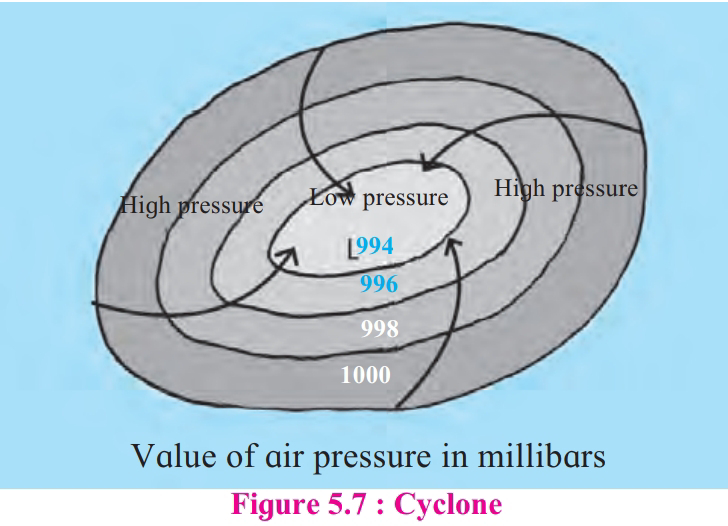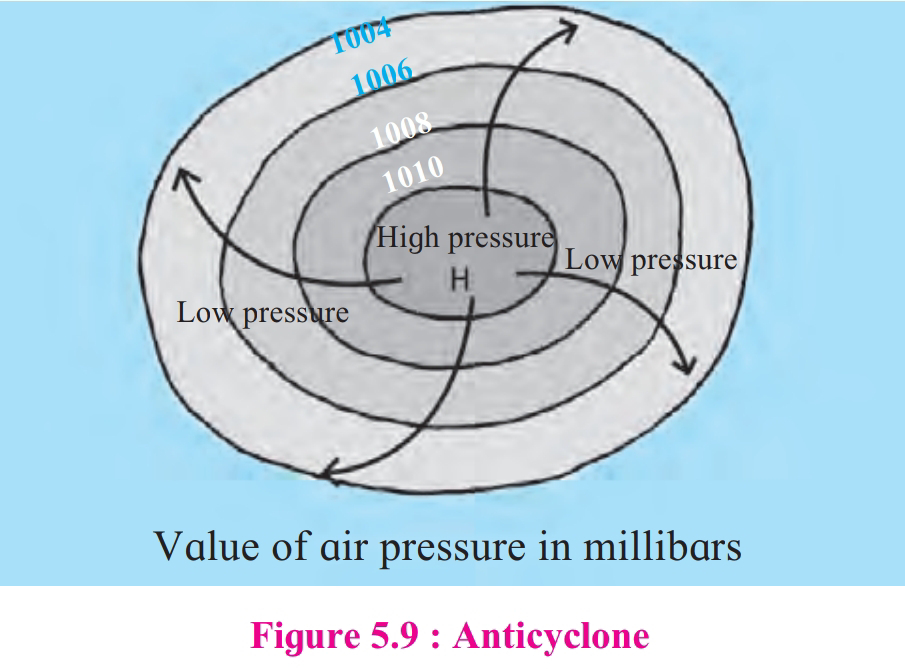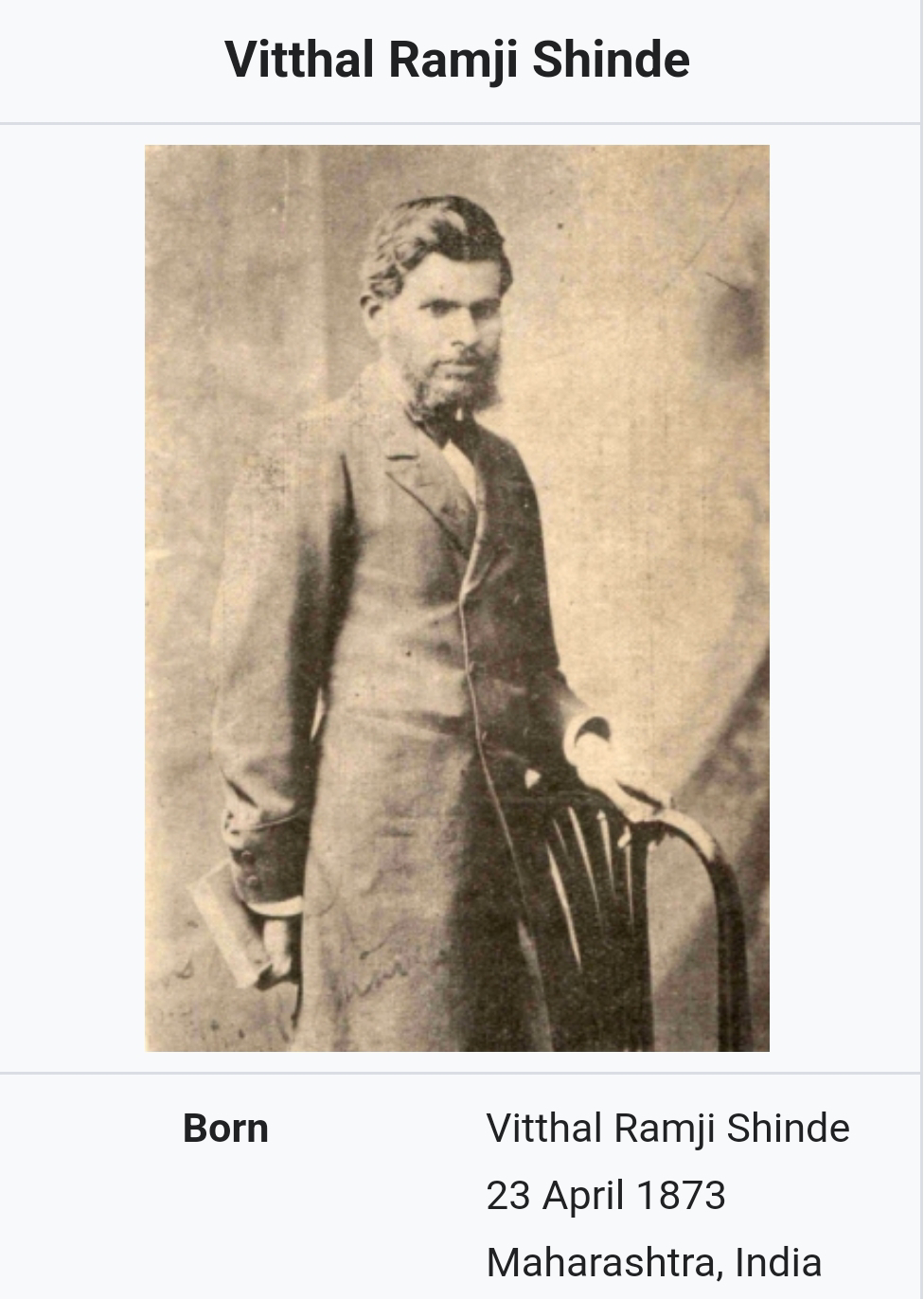Class 7 GeographyLesson no 5. Winds
Class 6 Geography
Lesson no 5. Winds
Q.1. Rewrite the following statements afterchoosing the correct option.
(1) When the air expands, it .............. .
(a) becomes solid (b) becomes thinner (c) gets lost (d) becomes humid
Ans: When the air expands, it becomes thinner.
(2) From high air pressure regions, winds ............ .
(a) blow to regions of still higher pressure. (b) blow towards regions of cooler air. (c) blow towards regions of low air pressure.
(d) remain still.
Ans: From high air pressure regions, winds blow towards regions of low air pressure.
(3) In the northern hemisphere, winds blowing towards the equator .......... due to the rotation of the earth.
(a) turn to the south (b) turn to the east
(c) turn to the west (d) turn to the north
Ans: In the northern hemisphere, winds blowing towards the equator turn to the west due to the rotation of the earth.
(4) The direction of seasonal winds blowing over the Indian subcontinent during winter is from the ....... .
(a) south-east to north-west. (b) south-west towards north-east.
(c) north-east to south-west. (d) north-west to south-east.
Ans: The direction of seasonal winds blowing over the Indian subcontinent during winter is from the north-east to south-west.
(5) The Roaring Forties in the southern hemisphere
(a) blow towards the equator. (b) blow in the areas around 40° S
parallel.(c) blow from the sub polar region of low pressure.
(d) blow around 40° N parallel.
Ans: The Roaring Forties in the southern hemisphere blow in the areas around 40° S Parallel.
Q.2. Identify the type of winds from the description given below.
(1) These winds from the south-west bring rains to the Indian subcontinent. During June to September, India gets rains. After this period these winds retreat.
Ans: South West Monsoon Winds.
(2) These winds blowing from the north Pole region towards 60° N parallel Cause cold wave conditions in extensive Areas covering North America, Europe And Russia.
Ans: Polar winds.
(3) Hilltops get heated quickly during the Day. The air in this part becomes hot, Light and starts ascending. Hence, a Low pressure area forms in this region. At the same time the air at the foothills Being cooler, and that area experiences High pressure. Air in that area blows Towards low pressure.
Ans: Valley Winds.
Q.3. Given below are the values of air pressure In millibars. Using the same, draw Diagrams to show a cyclone and an Anticyclone.
1. 990, 994, 996, 1000
2. 1030, 1020, 1010, 1000
Q.4. State one reason why.
(1) A belt of calm exists near the equator.
Ans: (i) A belt of calm exists near the equator because there is not much difference in the temperature and air pressure.
(ii) So winds do not blow in this region.
(2) The winds coming from the north-west In the southern hemisphere have Greater velocities than the winds Coming from the south-west in the Northern hemisphere.
Ans: (i) In the southern hemisphere the obstacle caused by the relief of the land surface is almost absent.
(ii) Therefore the winds coming from the north – west in the southern hemisphere have greater velocity than the winds coming from the south-west in the northern hemisphere.
(3) The monsoon winds in the summer Come from the sea but the retreating Monsoon winds in winter come from land.
Ans: Monsoon winds are generated due to the uneven heating of land and water in the different seasons.
(ii) During summers, land heats up quickly as compared to water & an area of low pressure is created on the land whereas an area of high pressure is created on the water.
(iii) But during winters low pressure is created on the water and an area of high pressure is created on land as it cools down quickly as compared to the water.
(iv) As winds blow from high pressure areas to low pressure areas, it blows from sea to land in summers & from land to sea in winters.
Thus the monsoon winds in summer come from sea but the retreating monsoon winds come from land.
Q.5. Complete the flow chart:
Ans:
Q. 6 Answer in short:
1.Why is the air pressure high in polar Areas in both the hemispheres?
Ans: In both the polar areas the
temperature here is below 0°C.
Hence the air is cold & heavy.Hence the air pressure is high in the polar areas in both the hemispheres.
2.What effect does the rotation of the Earth have on the winds?
Ans: The direction of the winds is influenced by the rotation of the earth.
In the northern hemisphere, winds get deflected towards the right of their original direction, whereas in the southern hemisphere they get deflected toward the left of their original direction.
3.Why do the cyclonic winds blow in a Circular manner?
Ans: (i) Cyclones are created when a low pressure area is surrounded by high pressure areas. In these conditions, winds start blowing towards the low pressure area from the surrounding high pressure areas.
(ii) But due to the rotation of the earth in the northern hemisphere the winds deflected towards the right of their original direction whereas in the southern hemisphere they get deflected towards the left of their original direction which causes the cyclone winds to blow in a circular manner.
4.State the reasons that lead to the Formation of cyclones and describe the Effects of cyclones.
Ans:
Cyclonic conditions are created when a low pressure area is surrounded by high pressure areas.
(ii) In these conditions, winds start blowing towards the low pressure area from the surrounding high pressure areas.
(iii) The effects of cyclone are as follows.
The sky is cloudy
Winds blow with a very high velocity
It rains heavily
It may cause loss of life and property in coastal regions






Comments
Post a Comment